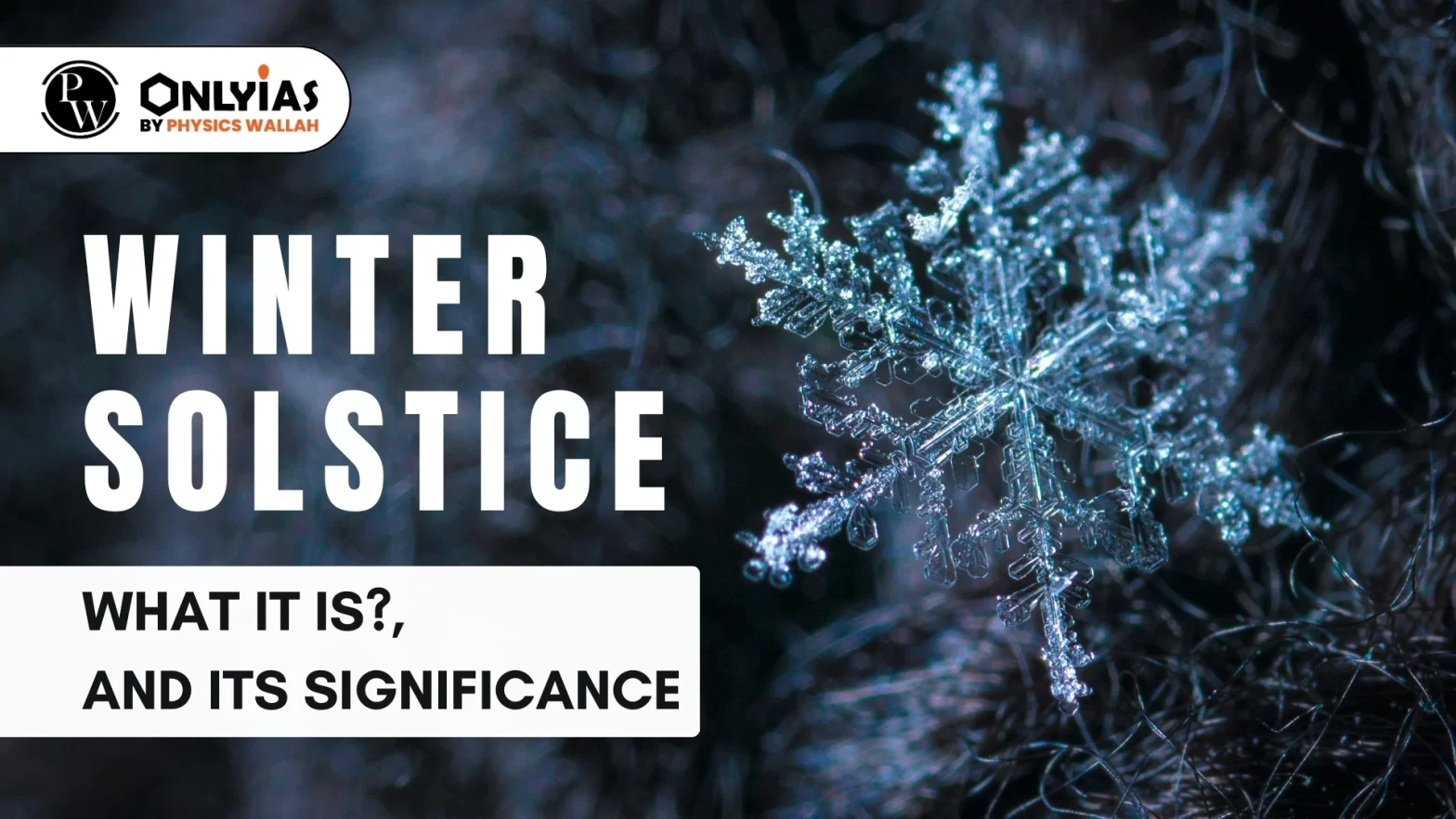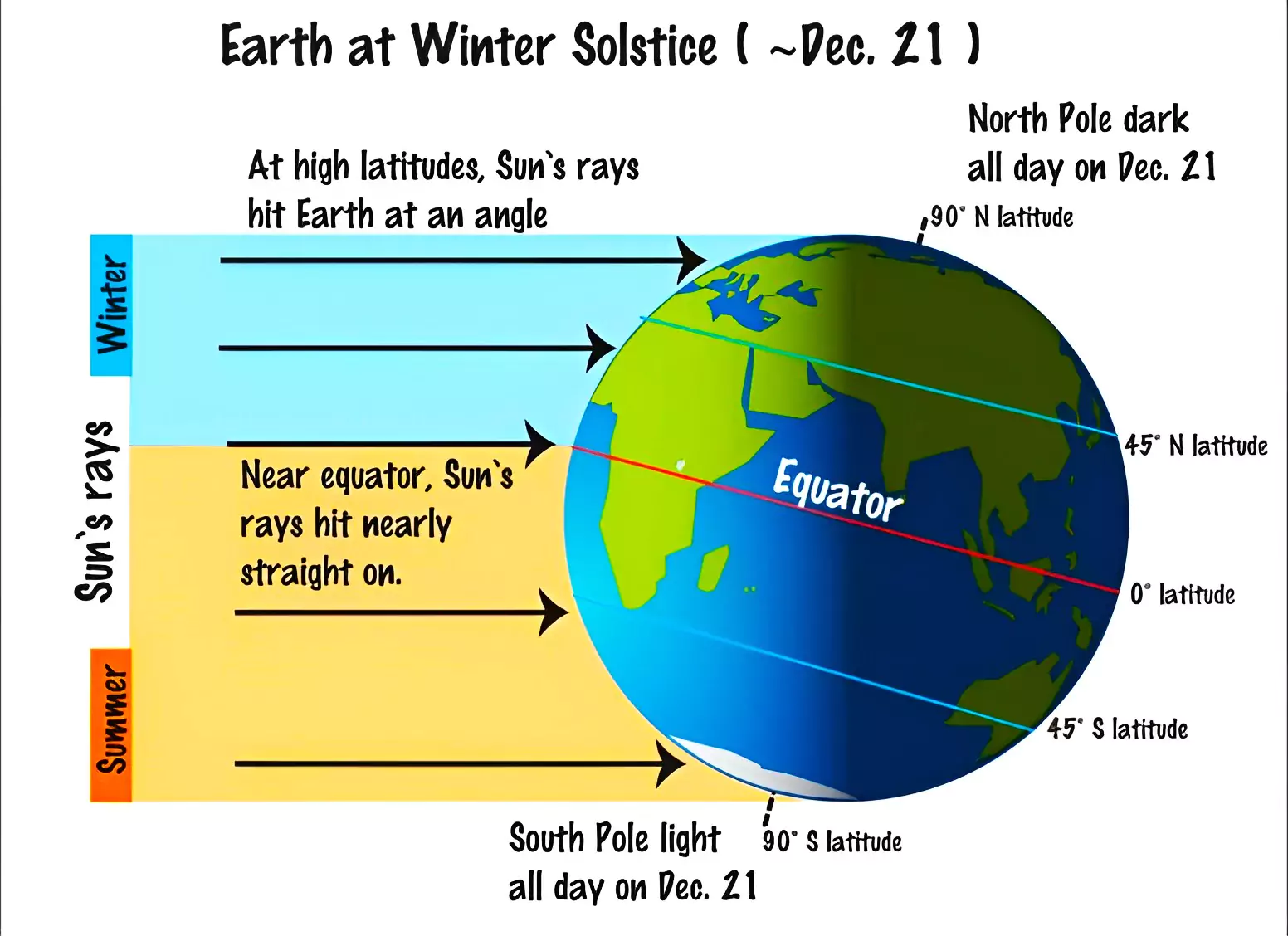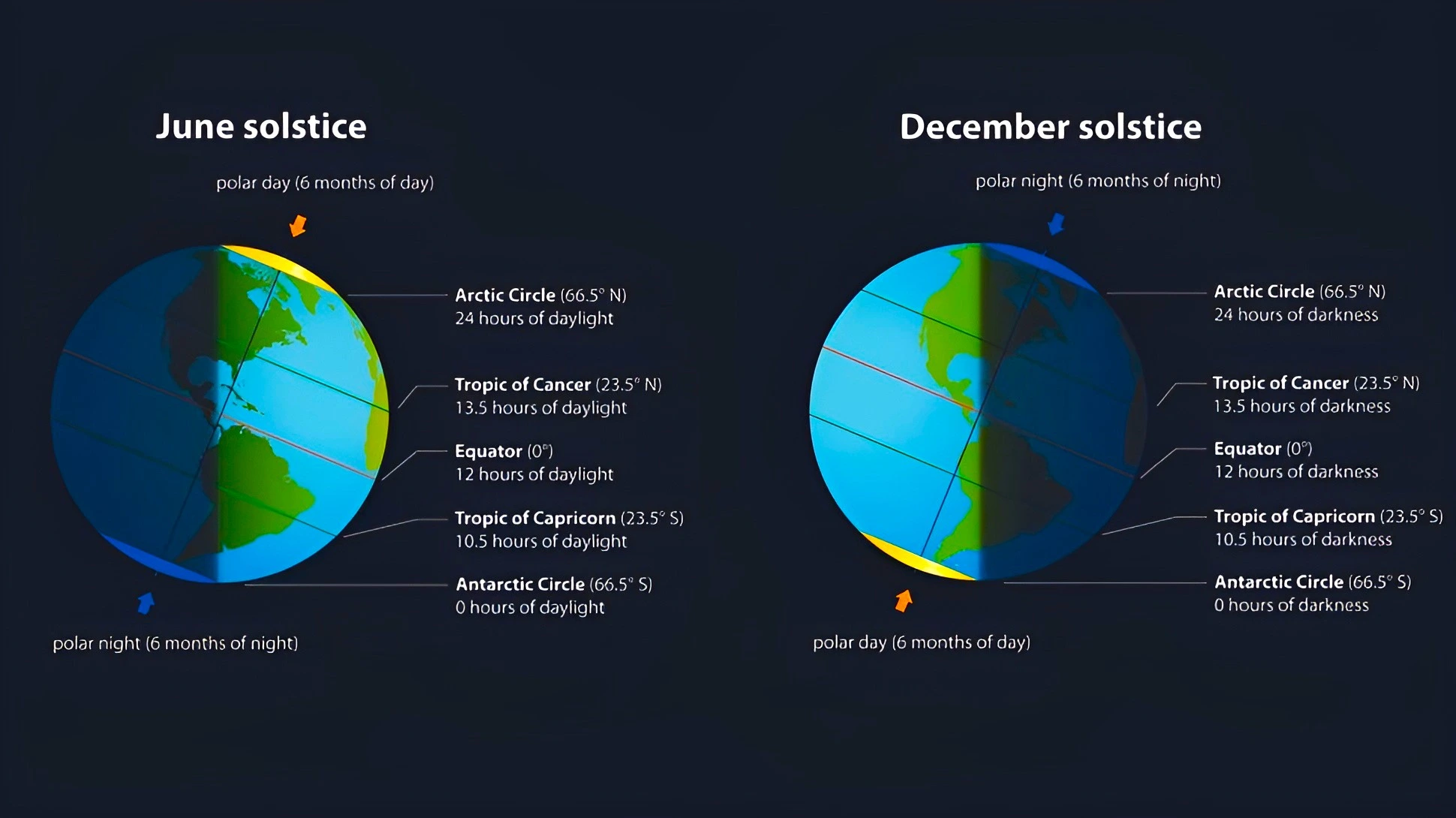Winter solstice, also known as hibernal solstice, marks the shortest day of the year. The Winter Solstice 2024 is occurring on December 21, 2024, at 09:20 UTC. It marks the shortest day and longest night of the year.


Winter Solstice also known as hibernal solstice, marks the official onset of winters in the Northern Hemisphere when Earth’s northern axis faces away from the sun.

Winter Solstice is an annual event that marks the beginning of winter in many cultures across the world. It also brings in many changes related to weather and lifestyle.
Ready to boost your UPSC 2025 preparation? Join PW’s UPSC online courses today!
A solstice is a phenomenon that occurs when the sun reaches its lowest or highest point in the sky during the year as a result of the Earth’s axis tilting to or away from the sun.
Winter solstice, also known as hibernal solstice, marks the official onset of winters in the Northern Hemisphere when Earth’s northern axis faces away from the sun.
In temperate areas, the winter solstice is seen as the middle of winter, while in some countries and calendars, it is seen as the beginning of winter.
During the winter solstice, the part of Earth containing the northern hemisphere leans farthest away from the sun. As a result of this tilt, sunlight needs to travel through more of the earth’s atmosphere, making it weaker and spreading out.
For people of northern Europe, including the Faroe Islands Estonia, and German, the event is celebrated as Yule. Makar Sankranti festival is celebrated in India, marking the end of the month with the winter solstice and the start of longer days. Iranians celebrate winter solstice as Yalda night, which is known to be the longest and darkest night of the year.
When the Earth’s axis during rotation points towards the sun, it is the summer season for that hemisphere. When the earth's axis points away, it is winter.
The Winter Solstice 2024 will be seen on December 21, 2024 at 09:20 UTC.

<div class="new-fform">
</div>